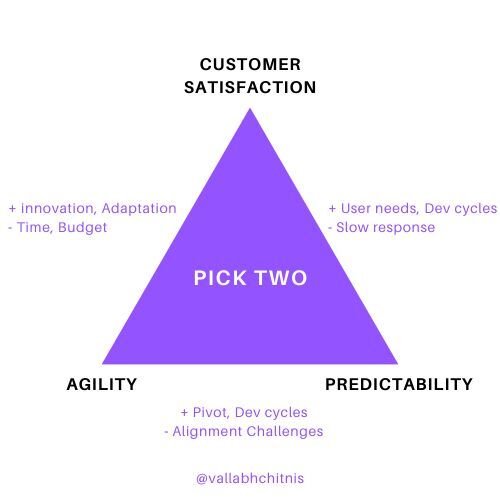The CAP theorem or Brewer’s theorem —Consistency, Availability, and Partition Tolerance—has long been a guiding principle for distributed systems.
It states that a distributed system can only guarantee two of these three characteristics at any given time.
1️⃣ Consistency: When you read something, you will receive either the latest written version or an error message if there was a problem.
2️⃣ Availability: When you try to read something, you will either see the latest version of the content or an error message if there was an issue.
3️⃣ Partition Tolerance: The system can still function even if some messages are not delivered or delayed between network nodes.
Suppose this theorem is applied to Product Management. Can we guarantee all or only two of the three characteristics?
👩👩👧👦 Customer Satisfaction (C): Ensuring that the product meets or exceeds customer expectations in terms of usability, reliability, and functionality.
🤸♀️ Agility (A): The ability of the product team to respond quickly to market changes, user feedback, or new opportunities.
📊 Predictability (P): The consistency and reliability of the product development process, delivering on time and within budget.
🔆 C + A
➕ Better innovation, Quick adaptation
➖ Timelines and budget
🔆 C + P
➕ Meet user needs, consistent development cycles
➖ Slow responses to market changes
🔆 A + P
➕ Quickly pivot, consistent development cycles.
➖ Challenges with aligning with evolving customer expectations or needs.
While Product leaders navigate trade-offs regularly, making strategic decisions based on the product’s unique context and market demands, this concept provides a novel framework to tackle various product management challenges.
How do you balance the ‘CAP’ in your product management strategy? Does one aspect consistently take precedence, or does the focus shift over time?
#CAP #Framework #ProductManagement #ProductStrategy